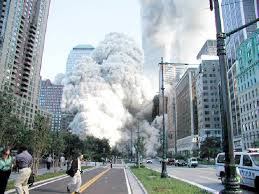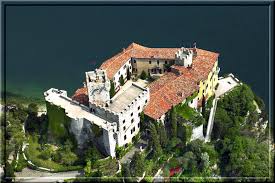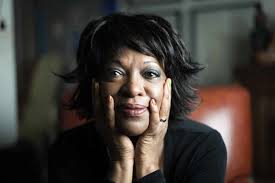He remains a man who it feels impossible to confine to the past tense. So said Jeremy Robson, one of the speakers at Dannie Abse’s celebratory memorial event held in Kings College Great Hall on Wednesday evening this week. Indeed more than a few of those who had come to remember him, confessed they half expected Abse to be there himself, still large as life. Carol Ann Duffy imagined he’d want to “get outta here” – too much poker-faced reverence – and, yes, it was easy to imagine him somewhere still working away at his set goals – 5 or 6 publishable poems a year and every 5 years a collection of his marvellously accessible, witty and moving poems. How often did he achieve his own expectations of a good poem: that the reader should enter it sober, but leave it drunk.
Beneath a projection of this marvellous photo of Abse, Paul Gogarty oversaw the readings and recollections, immediately plotting the four compass points of the poet’s life: poetry, family, chess and Cardiff City FC. Lynne Hjelmgaard (Abse’s partner for the last 6 years) read the mysterious, life-changing visitation recorded in ‘The Uninvited’ (the only poem he would re-publish from his first book, After Every Green Thing) as well as her own moving poem in tribute to him. Alan Brownjohn, recalled his friendship with Abse and his direct acquaintance with the source materials of the two powerfully dark poems he chose to read: ‘Three Street Musicians’ and ‘A Night Out’ (the latter discussed in my earlier blog).
Tony Curtis alluded to another of Abse’s much quoted poetic observations: “I start with the visible and am startled by the visible”. He argued that, though not conventionally religious, the poet was a deeply spiritual man who could perceive the invisible through the visible. This was demonstrated in Owen Sheers’ reading of the extraordinary ‘In the Theatre’ in which a surgeon incompetently meddles with a patient’s brain (this was around 1938, only a local anaesthetic) only for the dying man to cry out hauntingly, ‘Leave my soul alone’. Sheers said this was the first Abse poem he ever heard – on a tape playing in his parents’ car apparently. Imagine the quiet drone of the engine after lines like these: “that voice so arctic and that cry so odd . . . to cease at last when something other died./ And silence matched the silence under snow”. A memorable moment, leading Sheers to dispute the reading of this particular poem with Andrew Motion, who gracefully withdrew (the English rightly ceding to the Welsh on this occasion, Motion observed) and chose instead to read ‘Apology’. Motion also recalled meeting Abse at an early Eric Gregory do and asking him (as a judge of competitions) how he approached the task of whittling down the thousands of entries. Easy, Abse apparently replied, throw out every poem containing the word ‘myriad’.
Abse’s daughter Susanna painted a more domestic picture of husband and father, a lover of all sorts of games including quizzes, board games, sing-songs on long car journeys, casting spells on recalcitrant traffic lights and pretending to talk to John Lennon on the family phone. She also recalled his “visceral” sense of loss when Joan was killed in the car accident in 2005. Only through the act of writing his memoir, The Presence (2008), and the poems later published in Two For Joy (2010) did he slowly return to something like a normal life. Elaine Feinstein read ‘White Balloon’ (“Auschwitz made me / more of a Jew than ever Moses did”) and ‘St Valentine’s Night’, the latter reminding us of Abse’s achievement as a poet of both erotic and uxorious love. Carol Ann Duffy had earlier read ‘A New Diary’ and Gillian Clarke chose the much-anthologised, neo-Romantic ‘Epithalamium’ (“Singing, today I married my white girl / beautiful in a barley field”) which she followed with her own response to it, ‘Barley’.
Perhaps most movingly there were several clips of Abse reading his own work (mostly from Ian Michael Jones BBC film series Great Welsh Writers). So the poet himself completed the evening with his reading of ‘The Presence’, the heart-rending lament for his wife, Joan, which surely everybody assembled in Kings Great Hall, beneath its classical white pillars trimmed with gold leaf, felt should now be addressed to the author himself:
It’s when I’m most myself, most alone
with all the clamour of my senses dumb,
then, in the confusion of Time’s deletion
by Eternity, I welcome you and you return
improbably close, though of course you cannot come.



















